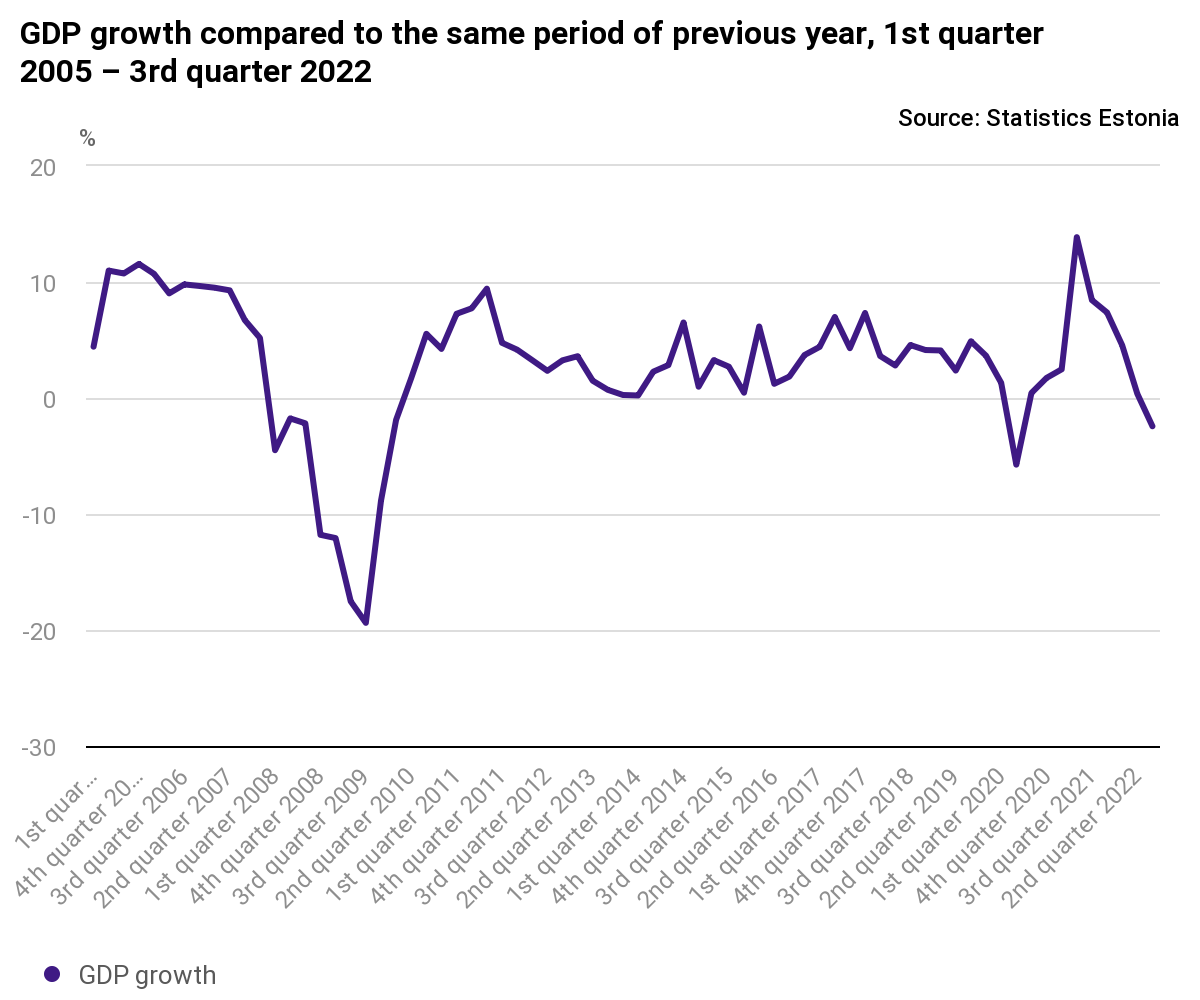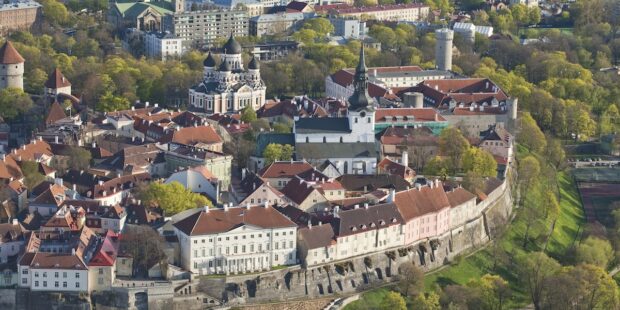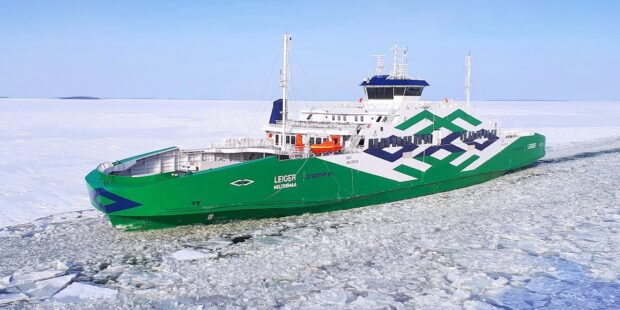Estonian economy contracted by 2.4% in Q3
Text Mark Taylor Photo Andrei Chertkov
According to data released by Statistics Estonia, in the third quarter of 2022, the gross domestic product (GDP) of the country fell by 2.4 per cent year on year, with agriculture, the energy sector and real estate having the biggest negative effect on the economy. The GDP at current prices was 9.3 billion euros.
In the third quarter of 2022, the biggest positive contributor to economic growth was professional, scientific and technical activities. It was followed by the construction sector and accommodation and food service activities, which exceeded pre-pandemic levels. There was also a modest growth in manufacturing and the transport sector. By far the biggest negative contributor was agriculture. The energy sector and real estate activities also had a significant hampering effect on economic growth.
“At current prices, the increase in value-added was over 10 per cent in almost all economic activities, but this can be attributed to rapidly rising prices. The price increases offset real growth in most economic activities and actually led to a decrease in value added in half of economic activities,” said Robert Müürsepp, a leading analyst at Statistics Estonia.
Private consumption, which showed growth in the first six months, took a downturn in the third quarter. There was a 19.3 per cent increase in private consumption at current prices, but its real value decreased by 0.4 per cent due to the fast growth in consumer prices.
“Everyday expenditures on housing and transport have increased substantially due to higher energy costs, while actual consumption has grown mainly in terms of expenditure on hotels and restaurants, and communication products and services,” added Müürsepp.
On the contrary, the biggest fall occurred in expenditure on furnishings, to which people paid more attention to during the pandemic. Expenditure on health, clothing and footwear has also decreased.
In the third quarter, the moderate growth trend continued in exports (3.6 per cent) as well as imports (6.2 per cent). Both export and import trade remained similar to last year’s levels. Trade in goods was primarily influenced by energy products and chemical products. On the other hand, there was a strong growth in trade in services – exports of services grew by 12 per cent and imports by 18 per cent. This growth was primarily driven by the supply and purchase of travel services and various transport services.
Along with falling by 2.4 per cent compared to the 3rd quarter of 2021, GDP also fell by 1.8 per cent compared to the previous quarter of this year.

To learn more about this and similar topicsEconomy Energy Estonia GDP 2022 Estonia GDP Q3 2022 Exports GDP Imports










